|
Russia
2012 Itinerary |
| Saturday,
August 18 |
Depart
Copenhagen, Denmark |
| Sunday,
August 19 |
day
at sea |
| Monday,
August
20 |
Stockholm,
Sweden |
| Tuesday,
August
21 |
Helsinki,
Finland |
| Wednesday,
August
22 |
St.
Petersburg, Russia |
| Thursday,
August
23 |
Tallinn,
Estonia |
| Friday,
August
24 |
day
at sea |
| Saturday,
August
25 |
return to
Copenhagen |
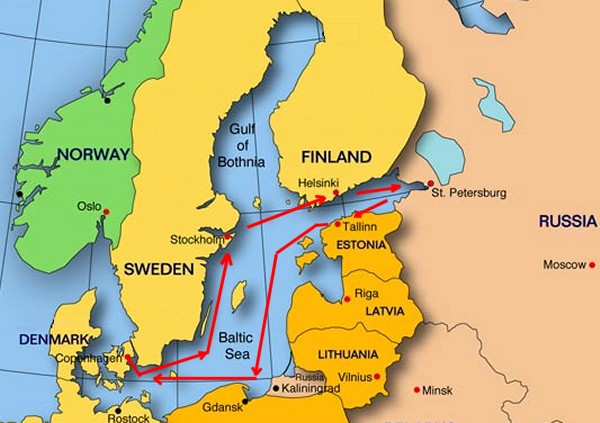
|
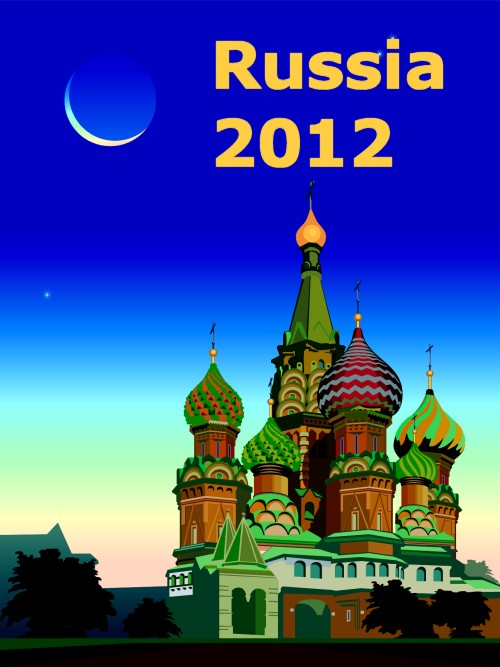 |
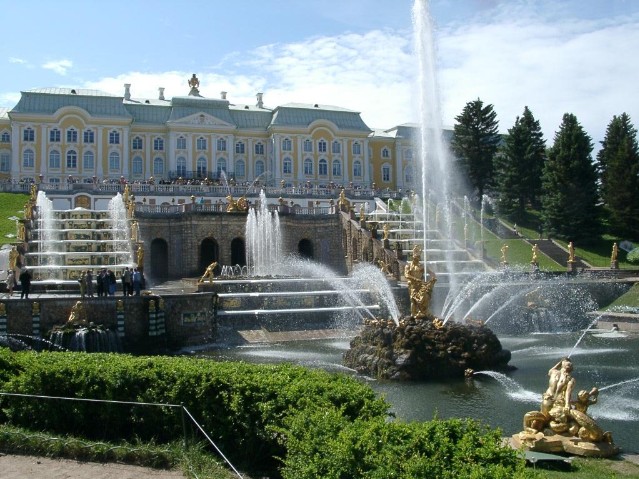 |
About this Trip:
On August 18th,
2012, SSQQ Travel will undertake our most ambitious journey
to date. We are headed halfway around the world to Russia
and the countries of the Baltic Sea.
Most of us have
just an inkling of the history from this part of the world.
In addition, the area is so remote that most of us Texans have
only the
vaguest sense of why this region is considered one of the
great travel destinations.
This highlight
of this journey will be our visit to St.
Petersburg, the former capital of Russia during the Tsarist
Era. Built on the banks of the Neva River, St.
Petersburg is fortunate to have a vast network of
picturesque canals running through it. These canals
are so beautiful that St. Petersburg has been hailed as the
"Venice of the North".
St. Petersburg
is home to the Hermitage, one of the most famous museums in
the world. St. Petersburg is also home to the stunning
Summer and Winter Palaces. Names like Peter the Great and
Catherine the Great will acquire new meaning as you behold
these magnificent buildings.
|
Sailing aboard Royal Caribbean's Brilliance of the
Sea, this trip has so much to offer in addition to just
St. Petersburg.
Only a few
of us have any idea how these countries were formed.
All of us are familiar with the Caribbean Sea and
the Mediterranean Sea. However up in Northern
Europe, for countless centuries warships have
crisscrossed the Baltic Sea to do battle with
neighboring countries.
Finland, for example, was ripped from Sweden by
Russia in 1809. Finland won its freedom from
Russia during the Russian Revolution of 1917.
Denmark has been at war with either Germany
or Sweden to maintain its independence all the back
to the day of the Vikings. Estonia has
been ruled by everybody. Once it was a part of
Denmark. Then it was a part of Sweden.
Then it was a part of Russia. Estonia got its
freedom from Russia in 1917 only to be reoccupied by
the Soviet Union during World War II. Estonia
regained its freedom during the collapse of the
Soviet Union in 1991.
And we
haven't even gotten to some of Russia's amazing
history, have we? The Tsars, the Romanovs,
Lenin, Stalin, the Soviet Union, Gorbachev, the
invasion of Napoleon, the invasion of Hitler, the
Revolution, War and Peace, Dr Zhivago... so much to
learn about!! That is why we take these trips.
It helps us learn about parts of the world we knew
practically nothing about before.
Our trip
should be considered a Grand Tour of
Scandinavian capitals:
Copenhagen, Denmark
(pictured), Stockholm, Sweden,
Helsinki, Finland and Tallinn, Estonia.
By the time this trip is over, you will have covered
almost as much water as did the Vikings of old!
These
elegant cities rich are rich
in history and tradition. Castles,
palaces, crown jewels,
galleries and museums, cathedrals and canals
are there for the eyes to
behold on this visit to
the far side of the planet over 5,000 miles away.
We will see cities filled with remarkable beauty
- countless parks, tree-lined squares and
boulevards, and lovely
water vistas. We will
explore cities and their
medieval Old Towns as well as
their ultra modern business districts.
St. Petersburg isn't the only
"Venice of the North". Copenhagen and
Stockholm both lay claim to the same title.
Unlike Houston which doesn't have a clue how to show
respect for its own waterway, each of these cities
are built along rivers that create spectacular
vistas.
Stockholm, for example, is completely riddled with
canals. Stockholm (pictured) has more canals
than Houston has freeways! Stockholm's 14
islands are separated by sparkling waterways, which
account for one third of Stockholm's total surface
area. Cruising these waterways and canals you
can appreciate the serene beauty of Stockholm's
waterside setting. Wouldn't it be fun to take a
river ride along the banks of these islands?
As they
say, whatever floats your boat is there for the
viewing. There is an amazing museum in every
city. If you want amusement parks, they don't
get much better than Tivoli Park in Copenhagen.
If you like gardens, there is the Summer Garden in
St. Petersburg and the Governor's Garden in Tallinn.
If you like the Renaissance Festival, wait till you
see the Medieval Old Town in Tallinn.
Best of
all, whether you are a single or a couple, what
better way to enjoy a magnificent trip like this
than to have the company and security of a group of
your own friends? Let's go see the world
together!
Rick
and Marla
|
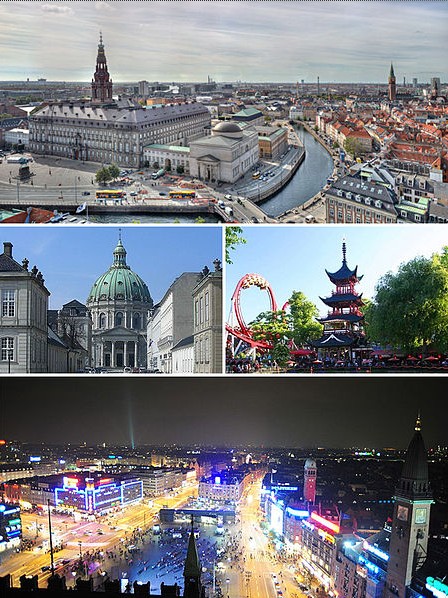
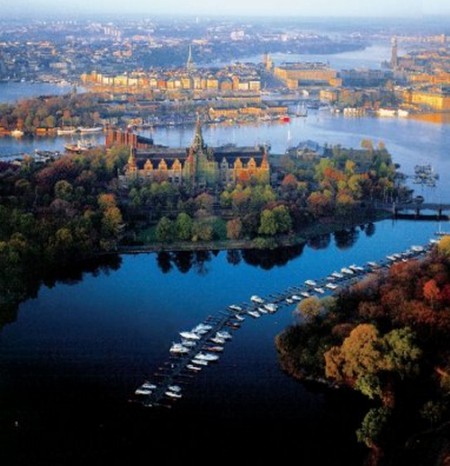 |
|
A Brief
History of the Baltic Sea
Rick's Note: Any cruise trip to the Baltic Sea needs to take into
consideration some of the major geographical features of the
region.
As you can see from the map, St. Petersburg is practically
Russia's only window to the west. Yes, there are also
Russia
ports in the far north, but the winter ice and cold make them useless
for much of the year. There is also a tiny
Russian exclave known as "Kaliningrad" next to Poland, but it is
geographically separated from the rest of Russia and
therefore useless as an export/import venue.
St. Petersburg
is the door to Russia. Interestingly, as you will read
in my History of
Russia, St.
Petersburg was founded on the exact spot where Russia's
destiny was first set in motion. Along with Moscow,
St. Petersburg has played a huge role in the story of this
important country.
|
St. Petersburg
is only accessible by sea for half of the year. Ice
plays a major role on the Baltic. The Baltic Sea is
ice-covered for about 45% of its surface area annually.
In particular, the three Gulfs freeze up.
The
ice-covered area during a typical winter includes the Gulf
of Bothnia, the Gulf of Riga and the Gulf of Finland.
When the Gulf of Finland freezes, St. Petersburg becomes
inaccessible by ship.
At one point far in the past, the
Baltic Sea was a giant enclosed lake. Its waters were
trapped inland similar to the Caspian
Sea.
Then as the Ice Age ended, the enormous buildup
of waters created so much pressure that the earth gave way
near Denmark. Three narrow
channels known as the Danish straits were created
between the southern tip of Sweden known as Scania and Denmark's
Jutland
Peninsula.
These gaps are
very small. The opening between Sweden and Denmark's
Zealand Island (where Copenhagen is situated) is
three miles. The opening between Zealand
and Funan Island is twelve miles and the opening
between Funan and the Jutland Peninsula is
just one mile.
Today there are bridges (and a tunnel) that allow
a car to actually drive from mainland Europe straight across
to Sweden by hop-scotching over the two islands in the
middle of the Straits.
|
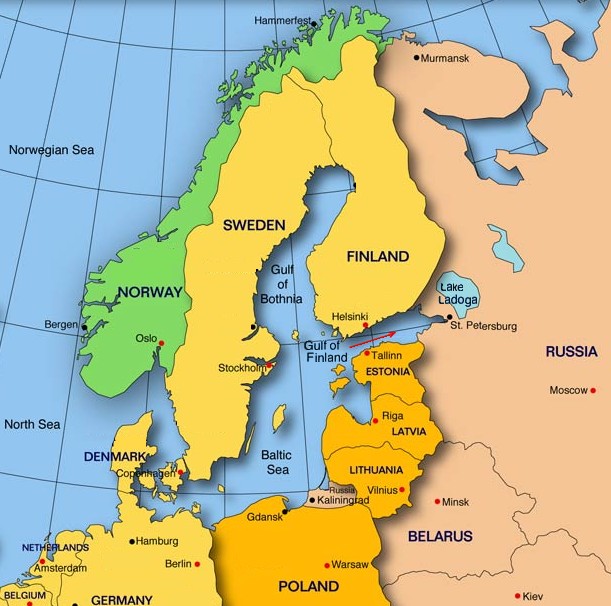 |
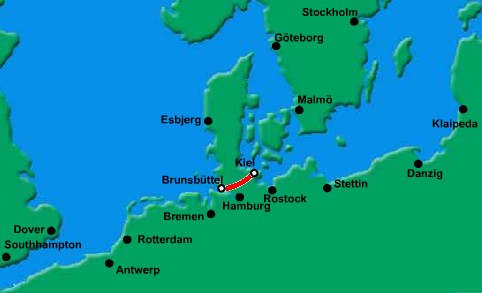 |
In 1895, Germany created the
Kiel Canal as a way to bypass Denmark.
250
nautical miles was saved by using
the Kiel Canal instead of going around the Jutland
Peninsula.
This not only saved
time but also avoided potentially
dangerous storm-prone seas.
Germany did
this as part of its pre-WWI military buildup.
Its new battleships could travel
from the Baltic Sea to the North Sea without having to go
around Denmark.
|
|
The Vikings
No story of the Baltic Sea area could ever be complete without
recalling the mighty Vikings. The Vikings were the first
dominant power in the region. Bound by common blood, rather
than battle each other, the Vikings preferred to expand their realms
in different directions.
During the Viking Age (790-1066 AD), the Norwegians expanded
to the south and west to places such as Ireland, Scotland, Iceland
and Greenland. The Danes moved against England, settling in the
Danelaw (north & east England) as well
as
Normandy in France. The Swedes moved to the east, founding the
Kievan Rus, the start that would one day become Russia. It is useful to note that the
area we call "Finland" was all part of Sweden back then.
Considering how fierce and war-like the Vikings were, their demise
was highly ironic.
The Viking Era appears to have ended due to the spread of
Christianity. Christianity didn't do much to stop the constant
wars between the territories, but it did have an odd effect on the
Vikings.
The Vikings' major source of profit had been through slave trading.
They would travel far and wide, attack colonies, and take prisoners
to sell elsewhere. Unfortunately, Christianity took a dim view
of slave trade. Fellow Christians should not be owned as
slaves. Soon the Vikings found no one willing to buy their
slaves any more. This took much of the economic incentive out
of raiding. In this bizarre way, the civilizing influence of
Christianity brought profound changes to the area known as
Scandinavia.
At this point, the people of the kingdoms of Norway, Sweden, and
Denmark ended their marauding ways and switched to trading with
other countries rather than attacking.
|
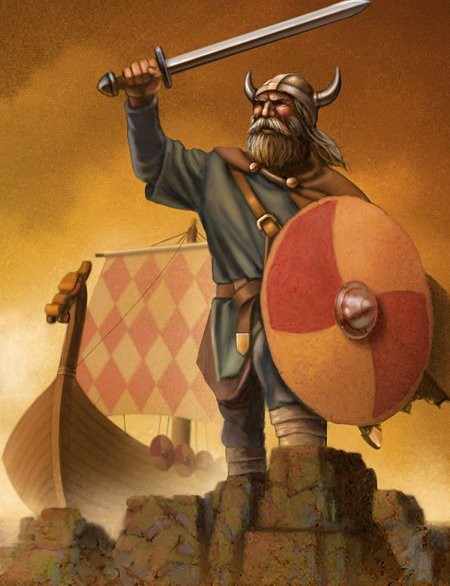 |
The Middle
Ages
The study of
how the various states of Europe were formed during the
Middle Ages is ridiculously complex. Over of period of
500 years, every single part of Europe seems to have
experienced alternating cycles of greatness and decline.
One of the
underdogs was Denmark. One would think Denmark would
be powerful due to its control of the valuable Danish
Straits. However, Denmark had the misfortune of being
situated at the crossroads of civilization. Every time
a new power wanted to expand, Denmark seemed to be in the
way. The Germanic people were always attempting to
seize control of the area. The Frankish people took
turns invading as well. If that wasn't enough, the
growth of the powerful Swedish Empire looked to Denmark as a
natural area of expansion. Even the neighboring Dutch
periodically became a menace.
Denmark had once been mighty. During the Viking Era,
the Danes were feared far and wide. They controlled
most of the British Isles at one point and the Kingdom of Denmark
extended all the way down to Hamburg in Germania.
However,
throughout the Middle Ages, the people of Denmark always
seemed to be on the defensive. Germany was
usually their biggest problem. Over the
centuries Germany kept forcing Demark to move its boundaries
further north. As a result, modern Denmark finally
retreated all the way back to the edge of the Baltic Sea.
Now it only had the tiny Jutland Peninsula and a series of
small islands in the Danish Straits left as the remains from
its once great kingdom.
|
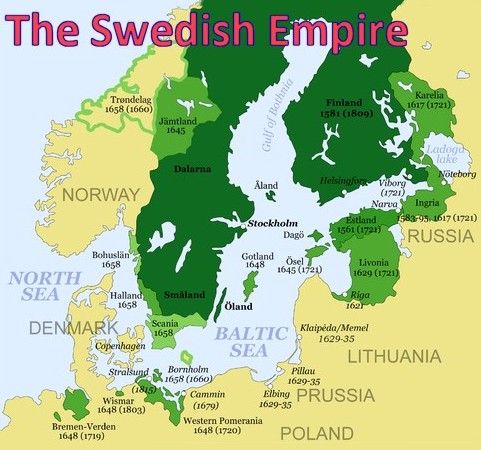 |
The Swedish Empire
For every territorial loser like Denmark, there had to be a winner.
That would be Sweden. Sweden had once been mighty during the
Viking Era, but fell behind thanks to the advent of Christianity.
During the medieval times, Sweden was a very
poor and scarcely populated country on the fringe of European
civilization with little power.
However, during the 17th century, Sweden emerged as a European great power.
Sweden rose to prominence on a continental scale during the tenure
of King Gustavus Adolphus. Thanks to some shrewd moves during
the Thirty Years War (1616-1648)Adolphus seized territories
from Russia and Poland–Lithuania in multiple conflicts.
However, after more than half a century of almost constant warfare,
the Swedish economy had deteriorated and its manpower was badly
depleted as well. Fortunately another gifted ruler, Charles
XI, took control just in time. He made it his lifetime task to
rebuild the economy and refit the army. His legacy to his son
Charles XII, the coming ruler of Sweden, was one of the finest
arsenals in the world, a large standing army and a great fleet.
As the new century loomed in 1700, Sweden was at the height of its
power.
|
Then something very terrible happened to Sweden. The country
would soon go from being the dominant power in the region to an
also-ran like Denmark.
Are you curious what happened to Sweden? Somebody named Peter
the Great came onto the world scene. Thanks to Peter the Great
and his prize city St. Petersburg, Sweden would begin a decline in
power that would see its territory shrink in half.
The Great Russian Bear had finally awakened from centuries of
hibernation.
If you are curious to know the whole story, I wrote an extensive
history of Russia and why St. Petersburg came to become so
important.
The
Early History of Russia
|
Copenhagen,
Denmark
Copenhagen is
considered the premier capital of Northern Europe. It is the center
of the most dynamic region in Scandinavia. Copenhagen is one of
Europe's oldest capitals with a royal touch - the monarchy in
Denmark is the oldest in the world!
Be sure to visit all the historical architectural wonders such as
the Royal Castle Amalienborg, and the Church of Our Saviour with its
golden staircase and golden spire.
As the capital of the oldest kingdom in the world, royal Copenhagen
has many interesting landmarks and architectural master-pieces
reminding us of Danish history so intimately associated with the
Danish throne and the royal family.
Right in the center of the city you'll find four royal palaces of
which Amalienborg is the residence of Queen Margrethe ll.
|
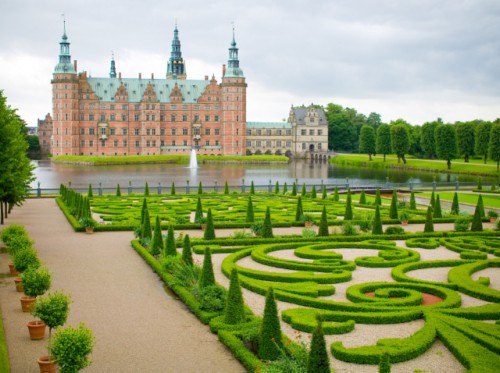 |
Amalienborg
Palace
Amalienborg Palace is the residence of Queen Margrethe, her husband
prince Henrik and her son the crown prince Frederik. Actually the
royal palace is not one, but four different palaces flanking a
square.
The four palaces wear built by four noble families in the middle of
the 18th century on direct orders by the king Frederik V. The King
needed a new royal palace but he didn't want to pay. The four
families were given tax immunity for 40 years as token for their
services to the crown.
In 1794 the royal family moved into the four palaces around the
square which is considered to be one of the great architectural
masterpieces in Europe. The statue in the middle of the square was
sculptured by the French artist Saly.
Every day at noon you can watch the change of guards in the
court-yard. When the Queen is at home she flies her colours with her
royal coat of arms.
As the religious centre of Denmark, Copenhagen has quite a few
churches which are architectural masterpieces. At least three of
them are worth a closer look:
The Church
of our Saviour
This magnificent church is named after King Christian V, the first
monarch on the Danish throne with absolute power. The church is
located in the Christianshavn area, close to the Freetown
Christiania.
Look up at the church tower and you'll see an exterior golden
staircase winding up to the spire. At the top, there is a golden
globe crowned by a statue of a flag-bearing statue.
The golden staircase enables you to climb to the top of the church’s
95 meters high spire and from there you have a fantastic 360 degree
view of Copenhagen, as well as the Oresund Bridge connecting Denmark
with Sweden.
To climb to the top is a must when you visit Copenhagen; even if it
can be quite a climb, it is well worth it for the excellent views.
There is a total number of 400 steps to the top of the spire, the
last 150 being outside.
When inside the church, look up into the ceiling, where you'll see
the chains of the Order of the Elephant and the Order of the
Dannebrogen. Both decorations were instigated by King Christian V.
The church's exquisite organ is supported by a relief of two
elephants.
The Marble
Church
In 1749 King Frederik V ordered the Marble Church, to be built as a
commemoration and celebration of the Oldenborg's 300 years on the
Danish throne. It was one of the most expensive architectural
adventures of those days; and the work on the new church was stopped
several times because of lack of money. And in 1770 the workers were
sent home and the construction site shut down. Only a small part of
the once so great idea had been finished and now it fell into ruins
- until 1874 when the financier Mr C.F. Tietgen bought it lock,
stock and barrel, and finished the construction. The Pantheon in
Rome was the model; its marble came from Norway.
Our Lady's
Church, The Copenhagen Cathedral
The cathedral as it is today was built 1810-29, designed in the
Neo-Classical style by the Danish architect C.F. Hansen. It can sit
more than one thousand people.
But its history goes back to the very beginning of the 13th century;
although a rather small and unpretentious building, it was
religiously important as the cathedral of Copenhagen and answered to
the bishop Absalom of Roskilde. Four times it was ravaged by fire.
In the beginning of the 14th century it was rebuilt and this time -
large as a cathedral. For the next two centuries it was the main
cathedral of Denmark, and in Europe it was considered as the most
precious architectural masterpieces.
In 1728 the church once more was destroyed by fire but rebuilt in
red brick, and re-inaugurated ten years later. The latest renovation
was done in the 1970s.
Copenhagen is famous for its statues of Christ and the Apostles by
famous Danish sculptor Bertel Thorvaldsen.
Gefion
Fountain
Visit Louisiana, Arken and Glyptotek - all on the top among art
museums in Europe; then be sure to take a
walk towards the Gefion Fountain, Copenhagen's own Fontana di Trevi,
and see how the Little Mermaid is doing...!
The Gefion Fountain is the largest monument in Copenhagen.
It is situated at the end of Amaliegade,
near the Kastellet.
The fountain is to Copenhagen what the Fontana di Trevi is to Rome,
a wishing-well. The goddess Gefion is the fountain’s main figure.
The fountain was donated to the city of Copenhagen by the Carlsberg
Foundation on the occasion of the brewery’s 50-year anniversary. The
artist, Anders Bundgård, sculpted these huge naturalistic figures in
1897-99, and the fountain was inaugurated in 1908.
The legend of Gefion states that long before the dawn of our
civilizations the powerful goddess Gefion was given land by the
Swedish king Gylfe. Well, not really given for nothing but involving
hard work. King Gylfe told Gefion that she could plough up as much
land as she could for one night and one day and it would all be hers
to do with whatever she wanted. Gefion turned her four sons into
big strong oxen and plough they did! When time expired she put all
the earth into the Øresund and created Zealand, the very island
where Copenhagen is situated today.
The big hole which Gefion left in the ground, when her ploughing was
done, is now the lake Vänern, north of Gothenburg, in Sweden. And if
you don’t believe it just look at a map and you’ll find that Zealand
and Vänern are shaped alike.
Little Mermaid
Every Danish sailor who ever stood on a deck knows that the waters
of Øresund used to be full of Mermaids. According to a legend, the
home of all Mermaids was Mermaid Banks in Øresund - the very same
place where today the Copenhagen's most famous attraction - Little
Mermaid - sits on a rock.
The Little Mermaid sculpture was commissioned in 1909 by the
Carlsberg brewer Carl Jacobsen, impressed by a ballet "The little
Mermaid" based on a fairy tale written by Hans Christian Andersen.
The sculptor Edward Eriksen sculptured the mermaid in bronze, using
his wife Eline as a model for the body. The head was modelled after
a primaballerina Ellen Price.
Be prepared: The Little Mermaid is really little - the city's
attraction #1 is only 1.25 metres/4 feet high
The fairy tale is a tragic story of a mermaid, the youngest daughter
of a sea king, who wants her soul to have an eternal life, like
humans have. Mermaids live only 300 years, and then they turn into
sea foam. The Copenhagen’s Little Mermaid has been sitting on her
rock since 1913, so she still has some more years to go…
Tivoli Gardens
Tivoli, the amusement park with class and charm, right in the middle
of the city, is a "must", too. The Tivoli Gardens have amused and
enchanted Copenhageners and people from all over the world since its
first season in 1843.
Like a small fairy-tale village, you'll find it right in the heart
of Copenhagen. And we assure you that Tivoli's got something for
everyone, no matter what age. You'll find everything from roller
coasters to theatres, romantic gourmet restaurants, cafés, bars,
magnificent flowers and outdoor stages where local and international
stars perform throughout the season.
It features thousands of flowers, a merry-go-round of tiny Viking
ships, games of chance and skill (pinball arcades, slot machines,
shooting galleries), and a Ferris wheel of hot-air balloons and
cabin seats. The latest attraction at Tivoli, "The Demon," is the
biggest roller coaster in Denmark. Passengers whiz through three
loops on the thrill ride, reaching a top speed of 50 mph.
An Arabian-style fantasy palace, with towers and arches, houses more
than two dozen expensive restaurants, from a lakeside inn to a beer
garden. Take a walk around the edge of the tiny lake with its ducks,
swans, and boats
You may want to visit at night. More than 100,000 specially made
soft-glow light bulbs and at least a million regular bulbs are
turned on. What a sight to behold!
There is more: have a Carlsberg beer in one of many beer cafés by
the canal in Nyhavn, or visit the Carlsberg Brewery, to learn about
the origins of the world famous Danish beer.
Rosenborg Castle
Rosenborg Castle is
a renaissance castle located in the centre of Copenhagen.
The castle was originally built as a country
summerhouse in 1606 and is an example of Christian IV's many
architectural projects.
The castle is situated in "The King's Garden".
The Rosenborg Castle Garden is the country's oldest
royal garden and was embellished in the Renaissance style by
Christian IV shortly before the construction of the main castle.
Today, the gardens are a popular retreat in the centre of
Copenhagen, and attract an estimated 2.5 million visitors every
year.
Nyhavyn
In old days, Nyhavn was a place for sailors coming to Copenhagen,
and the port was split in two parts - one “naughty”, and one
“nice” side.
Nowadays Nyhavn - with its picturesque harbour with old sailing
ships bobbing on the canals’ water, and colourful facades of old
houses - is a big tourist attraction, along with the nearby Kongens Nytorv, Strøget, and Amalienborg Palace. It is here various
canal tour excursions start, too.
However, Nyhavn is still popular among the locals, who as soon as
weather permits occupy numerous outdoors bars and restaurants by the
canal. Others prefer to spend time simply sitting by the waterfront
and chatting over some beers. Today, on this formerly gloomy side of
the street, the atmosphere is always cosy and familiar.
The famous Danish writer H. C. Andersen wrote his first fairy tale
in the house number 20 down the harbour in 1835; he ended his life
in the house number 18. In between, he lived nineteen years in the
number 67
These are truly exciting, cool and very enjoyable places to visit.
Rick's
Write-up on our actual visit to Copenhagen
|
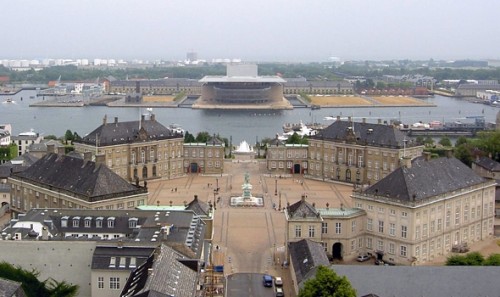
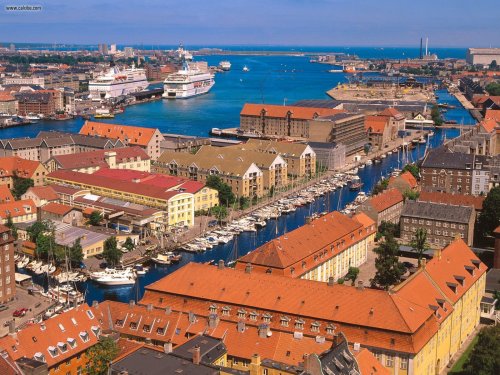
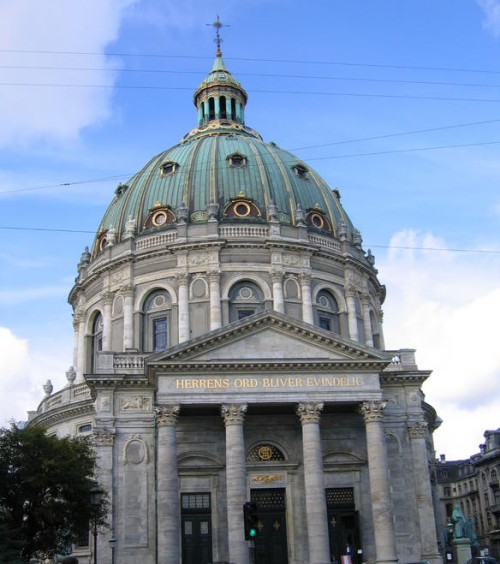

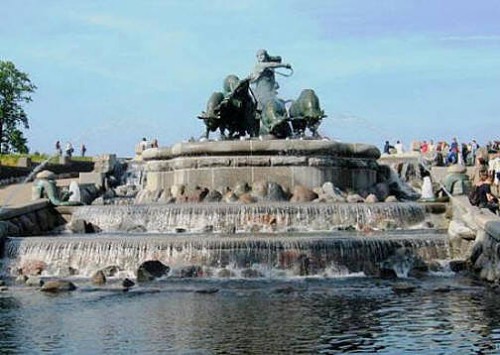
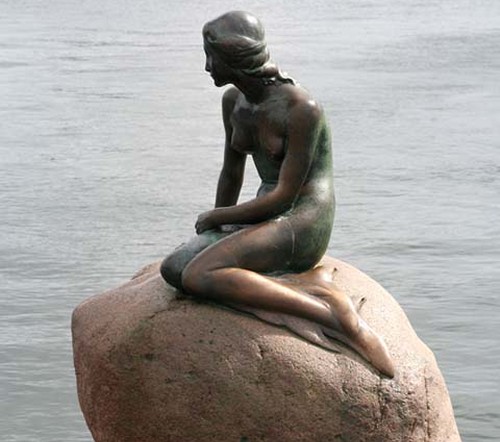
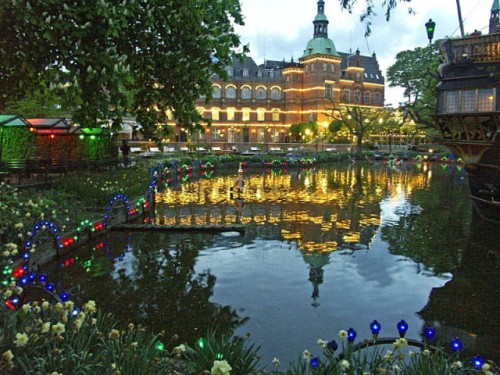
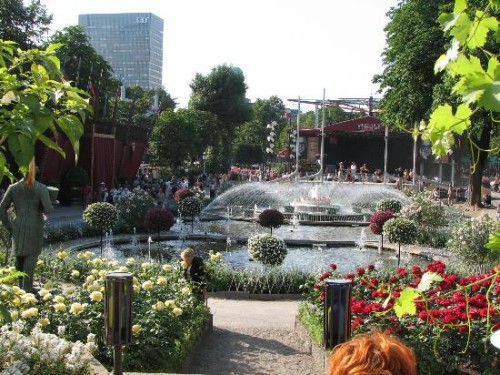
Tivoli Gardens
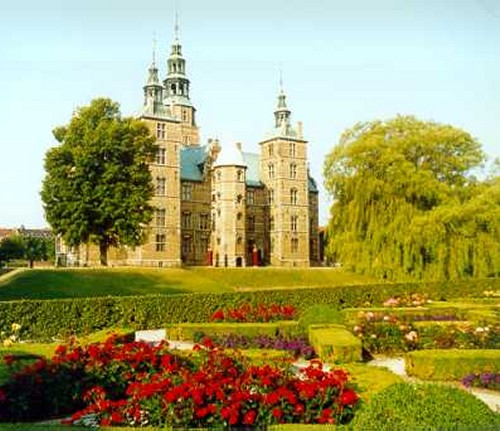
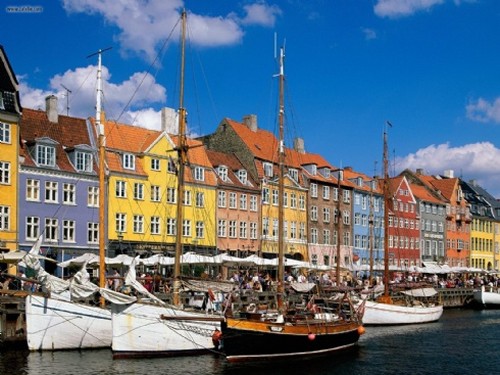
Nyhavn Harbor |
Stockholm,
Sweden
Stockholm is
arguably Scandinavia's most regal, cutting-edge and
intriguing city. It sits astride 14 islands on the sparkling
waters of Lake Mälaren connected by 57 bridges. The Swedish
capital is a cool Nordic beauty with a dramatic backyard.
You'll discover that urban can be natural and historic can
be hip.
Stockholm is also one of the most beautiful capitals in the
world. The beautiful buildings, the greenery, the fresh air
and the proximity to the water are distinctive traits of
this city. The Royal National City Park, (the first National
City Park in the world), is a green space that breathes for
the city, and is a constant presence within the crush of the
city.
The world's first national urban park forms an arc more than
six miles long, stretching around and through the city. The
park abuts the adjoining forests around the city, ensuring
an exceptional wealth of species. You can encounter deer and
hares, even foxes and moose, and spot rare birds,
butterflies and insects, right inside the city. You can walk
for days through the Ekoparken, discovering ever new lovely
spots.
There's an abundance of things to see within the park:
museums, an amusement park, theaters and entertainment,
castles, inns and hotels, sports facilities, numerous
residences from different historical periods, hills with
centuries-old oak trees, lakes, streams, bays, marshes and
canals, meadows with grazing cows, horses and sheep,
secluded swimming spots, rocky hilltops and areas with wild,
virgin nature where you will have difficulty imagining
you're in the middle of a big city.
With its 750 year history and rich cultural life, Stockholm
offers a wide selection of world-class museums and other
attractions. Most of the city's attractions can be reached
on foot, and there's a good chance of experiencing a lot of
things in a short time. Experience big-city life, the
history of civilization and natural scenery, all in the
course of the same day.
Royal Palace
The Royal Palace is the official residence of His Majesty
the King of Sweden, with over 600 rooms. The Palace is open
to the public and offers no less than five museums. The
Palace was largely built during the eighteenth century in
the Italian Baroque style, on the spot where the "Tre
Kronor" castle burned down in 1697. Visit the reception
rooms with splendid interiors from the eighteenth and
nineteenth centuries, Rikssalen (the Hall of State) with
Queen Kristina's silver throne, and Ordenssalarna (Halls of
the Orders of Chivalry). You can also see Gustav III's
Museum of Antiquities, the Tre Kronor Museum and the
Treasury. The Royal Palace also contains the Armory, with
royal costumes and armor, as well as coronation carriages
and magnificent coaches from the Royal Stable. Make sure not
to miss the parade of soldiers and the daily changing of the
guard.
City Hall
Be sure to visit Stockholm's City Hall. Climb the City Hall
tower for a fantastic view of Stockholm. City Hall, with its
spire featuring the golden Three Crowns, is one of the most
famous silhouettes in Stockholm. Guided tours are available
all year round.
Stockholm's City Hall is one of the country's leading
examples of national romanticism in architecture. The City
Hall was designed by the architect Ragnar Östberg, and
opened on Midsummer Eve in 1923. The City Hall is built from
eight million bricks, and the 106 meter tall tower has the
three crowns, which is the Swedish national coat of arms, at
its apex. Behind the magnificent facades are offices and
session halls for politicians and officials, as well as
splendid assembly rooms and unique works of art. Stockholm's
municipal council meets in Rådssalen, the Council Chamber.
The great Nobel banquet is also held in City Hall. After
dinner in Blå hallen, the Blue Hall, Nobel Prize recipients,
royalty and guests dance in Gyllene salen, the Golden Hall,
with its 18 million gold mosaic tiles.
Gamla
Stan
Don't miss Gamla Stan, Stockholm's oldest attraction and one
of the best preserved medieval city centers in the world.
Walk through small winding streets lined with stores full of
handicrafts, antiques, art galleries and cafés. The Royal
Palace and Stockholm Cathedral are also located in Gamla
Stan.
Gamla Stan is one of the largest and best preserved medieval
city centers in Europe, and one of the foremost attractions
in Stockholm. This is where Stockholm was founded in 1252.
All of Gamla Stan and the adjacent island of Riddarholmen
are like a living pedestrian-friendly museum full of sights,
attractions, restaurants, cafés, bars and places to shop.
Gamla Stan is also popular with aficionados of handicrafts,
curios and souvenirs. The narrow winding cobblestone
streets, with their buildings in so many different shades of
gold, give Gamla Stan its unique character. Even now cellar
vaults and frescoes from the Middle Ages can be found behind
the visible facades, and on snowy winter days the district
feels like something from a story book.
There are several beautiful churches and museums in Gamla
Stan, including Sweden's national cathedral Stockholm
Cathedral and the Nobel Museum. The largest of the
attractions in the district is the Royal Palace, one of the
largest palaces in the world with over 600 rooms. In
addition to the reception rooms, there are several
interesting museums in the Palace, including the Royal
Armory, with royal costumes and armor. Don't miss the parade
of soldiers and the daily changing of the guard.
Västerlånggatan and Österlånggatan are the district's main
streets. The city wall that once surrounded the city ran
inside these streets along what is now Prästgatan. In the
middle of Gamla Stan is Stortorget, the oldest square in
Stockholm. Stortorget is the central point from which runs
Köpmangatan, the oldest street in Stockholm, which was
mentioned as early as the fourteenth century. Mårten
Trotzigs gränd (Mårten Trotzigs alley) is hard to find. It's
the narrowest alley in Gamla Stan, only 90 centimeters wide
at its narrowest point. Make sure not to miss Riddarholmen
and the Riddarholmen Church. The church is a royal burial
church, and was built as a Franciscan monastery for the
so-called Grey Brother monks in the thirteenth century.
The green island of Djurgården is home to some of the city's
most popular attractions. Visit the world-famous warship the
Vasa at The Vasa Museum. The Vasa is the only preserved
seventeenth-century ship in the world, and a unique art
treasure. More than 95 percent of the ship is original, and
it is decorated with hundreds of carved sculptures.
The 69 meter-long warship Vasa sank on its maiden voyage in
the middle of Stockholm in 1628, and was salvaged 333 years
later in 1961. For nearly half a century the ship has been
slowly, deliberately and painstakingly restored to a state
approaching its original glory. The three masts on the roof
outside the specially built museum show the height of the
ship's original masts.
Today the Vasa Museum is the most visited museum in
Scandinavia, with over one million visitors a year. There
are nine different exhibitions around the ship to tell about
life on board the ship.
If you prefer, visit the world's oldest open-air museum
Skansen. Skansen consists of the oldest open-air museum in
the world and the Stockholm zoo, with a beautiful location
on Royal Djurgården and a view over all of Stockholm.
Skansen is a favorite both among Stockholmers and visitors
passing through, and it's a perfect family outing. At
Skansen you can learn about traditional crafts and
traditions. This is the place to visit historic Sweden in
miniature. 150 farms and dwellings from different parts of
the country were disassembled and transported here.
You'll find charming town districts with glass blowing,
pottery, a tinsmith's workshop and a bakery, a gold-colored
manor house, the Skogaholm manor house, the beautiful
eighteenth-century Seglora wooden church and the The museum
shop is a must for fans of traditional handicrafts. You can
also see all of the animals native to Scandinavia such as
moose, bears, lynxes, wolves, wolverines and seals. There is
also a terrarium, a monkey house and a children's zoo.
Swedish traditions such as Midsummer, Walpurgis Night and
Lucia are celebrated at Skansen. Skansen in the Christmas
season is a special event, with a Christmas market,
traditional Swedish julbord (Christmas buffet) and hopefully
snow. Those who want to enjoy a traditional Swedish
smörgåsbord can have their wish at the Solliden restaurant.
Skansen has several restaurants and charming cafés.
|
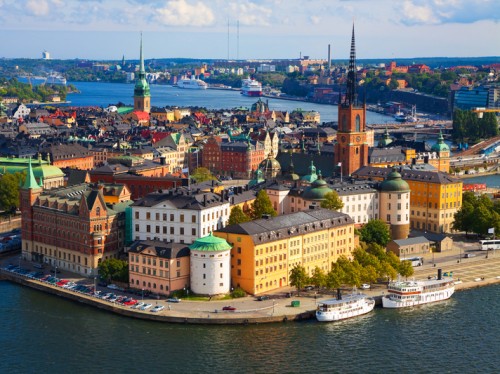
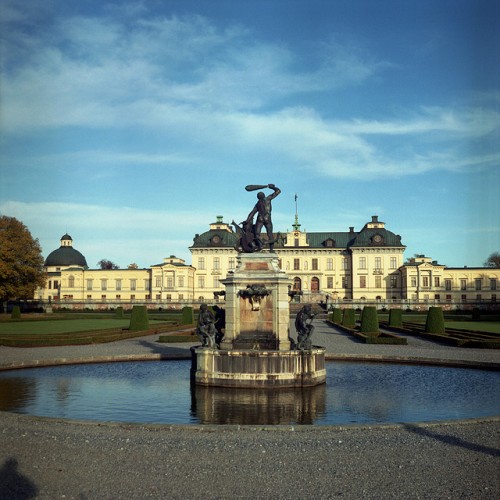

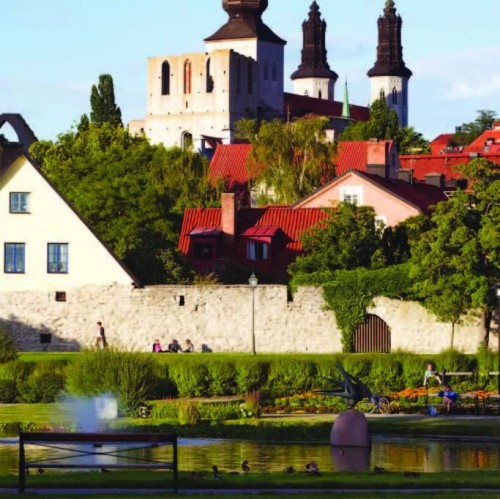
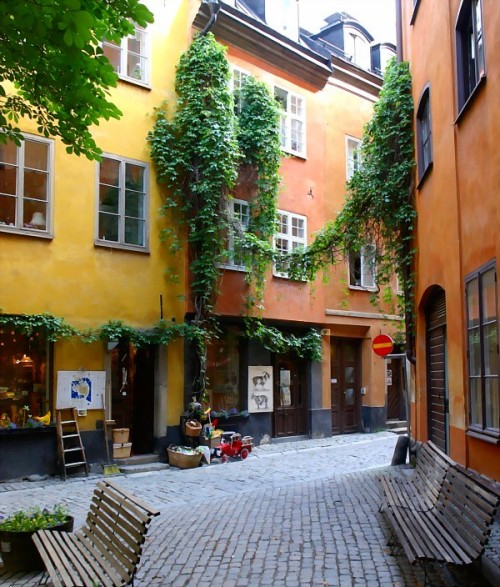
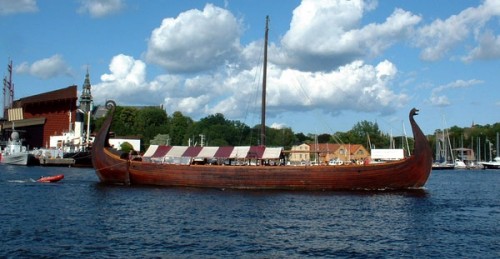
 |
Helsinki,
Finland
Helsinki, the
capital of the Republic of Finland, is a modern city with
over half a million residents and is situated on the Baltic
Sea. Helsinki is one of Europe's richest capitals. Helsinki
is often regarded as the economical capital of Scandinavia,
with important wordwide businesses, such as Nokia and
Laponia Jewelry, having based their headquarters there.
Helsinki is situated on the south coast of Finland. Founded
by King Gustaf Vasa of Sweden in 1550, the city of Helsinki
was initially a small fishing town until 1812 when it was
"modernized" under Russian rule and turned into the
administrative capital of the Autonomous Grand Duchy of
Finland. Carl Engel - an architect from Lublin in Germany -
was asked to come to Helsinki and re-design it.
Helsinki is
thus a prime example of 19th century Neoclassical
architecture, and the Lutheran Cathedral in the middle of
the city is, without doubt, one of its best known landmarks.
While the capital suffered little damage in the civil war
following Finland's declaration of independence in 1917,
Helsinki was constantly being bombed by Soviet airplanes
during WWII.
Helsinki is unique among Northern European cities. The
lifestyle in the second-most northern capital city in the
world is full of contrasts and activities in the form of
hundreds of events and friendly people. Helsinki's identity
has been formed by cultural influences from both the East
and West.
Over 450 years of history, several architectural layers and
the impact of different periods can be clearly seen in
Helsinki. Finnish design has also made the country's capital
city world famous. The beauty of the surrounding nature
blends seamlessly together with high-tech achievements,
while old traditions mix with the latest contemporary
trends. The city centre has many beautiful parks, and the
nearby forests offer an ideal setting for peaceful and quiet
walks.
Helsinki is a compact and beautiful city that is ideal for
seeing on foot. The city also has an excellent public
transportation system for getting around and visiting
outlying areas
Here are a few of the top ways to spend your time in
Helsinki:
Senate Square and Market Square - the Heart of Helsinki
The Senate Square and surrounding buildings form a unique
and cohesive example of Neo-Classical architecture. The
square is decorated by three buildings designed by C. L.
Engel between 1822 and 1852: the Cathedral, Council of State
and the University of Helsinki.
In the immediate vicinity you will also find the National
Library, the Sofiankatu museum street, Esplanade Park and
the Market Square. In the summer the Market Square is filled
with stalls selling fruits, vegetables and souvenirs. It is
also a great place to admire, taste and purchase fresh and
smoked fish.
Suomenlinna Castle
Suomenlinna is one of the world's largest maritime
fortresses and has been a UNESCO World Heritage Site since
1991. Built on six islands off the coast of Helsinki,
Suomenlinna is today one of the most popular sights in
Finland.
Suomenlinna offers an unforgettable experience for all ages,
offering museums, special events, idyllic cafes and cozy
restaurants. It is a great place for a walk year-round.
Suomenlinna is a group of small islands that sits guard to
the city harbor. In the 1700s an impressive fortress was
begun and then further expanded throughout the 1800s under
Russian rule. Military use was stopped about 30 years ago
and today about 900 people live on the small island. Take a
ferry from the market square to get there and explore the
castle and the surrounding areas.
Temppeliaukion Kirkko (Rock Church)
The Cathedral of Helsinki is perhaps the most photographed
and recognizable building in Finland. Designed by C. L.
Engel, the Cathedral celebrated its 150th anniversary in
2002.
The Temppeliaukio 'Rock' Church is one of Finland's most
popular tourist attractions and one of the most respected
examples of modern architecture in Helsinki. Quarried out of
the natural bedrock, the church has excellent acoustics and
is a popular venue for concerts.
Completed in 1868, the Uspenski Cathedral is the largest
orthodox church in Western Europe. With its golden cupolas
and redbrick facade, the church is one of the clearest
symbols of the Russian impact on Finnish history during the
19th century.
This modern church shows the simplicity of Finnish design in
its truest form. Carved from a rock with a beautiful copper
dome, this church is known for its clean lines, open space,
and natural wood and rock colors. Located in the eastern
area of the city, the church is centrally located and easy
to find.
Helsinki Seurasaari Open Air Museum
The Seurasaari Open-Air Museum provides an insight into
Finnish housing in days gone by and Finnish folk tradition.
The buildings and interiors transferred to the Museum from
the Finnish provinces reflect the life of crofters, peasants
and gentry from the 18th to the 20th century. Guides in
national costumes lead visitors back to the cottages and
salons of former times.
Located on an island just a few kilometers from Helsinki,
the museum is easily reached by public transport. Along with
being host to a nice open air museum made up of buildings
from all over Finland depicting all sorts of Finnish
architecture, the island is a great place to walk or run and
just enjoy some fresh air. During holidays and summer there
are many events here as well as interesting handicraft
demonstrations.
National Museum of Finland
This is the largest historical museum in Helsinki and offers
a large collection dating from prehistoric times to the 21st
century. The actual building that the museum is housed in is
a tourist attraction itself, as it is a romantic style
neo-medieval castle. This museum will give you a
comprehensive overview of the history of the country and its
people.
Helsinki Kauppatori
This is a great market to explore if you are in Finland in
the summer. Enjoy some great Finnish delicacies such as
salmon or even reindeer for lunch while basking in the sun
and fresh air. This is a nice break from sightseeing and a
great opportunity to catch a free concert on the Eslanadi or
just relax, feel the breeze and take in some Finnish
culture.
|
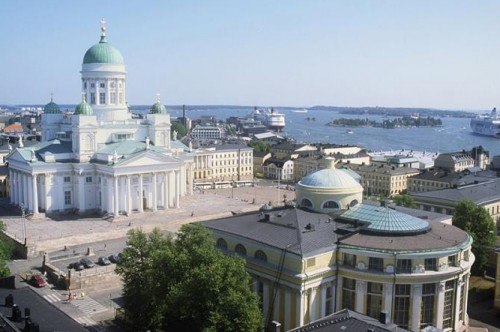
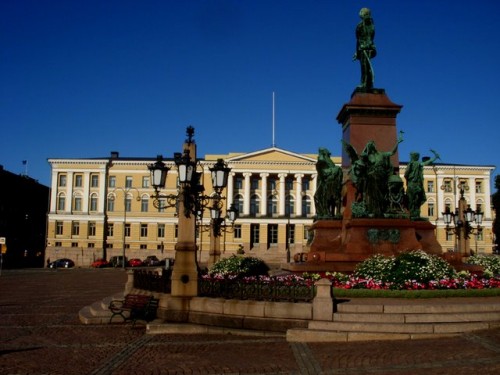
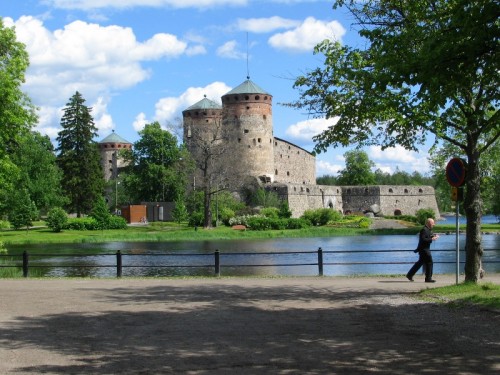
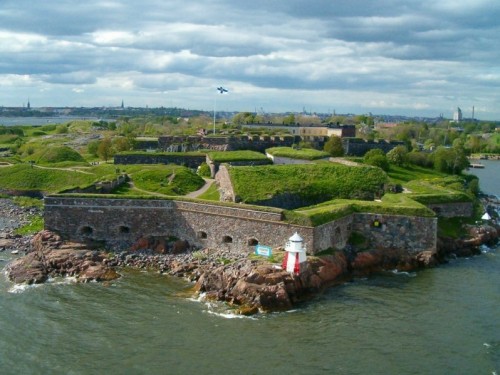
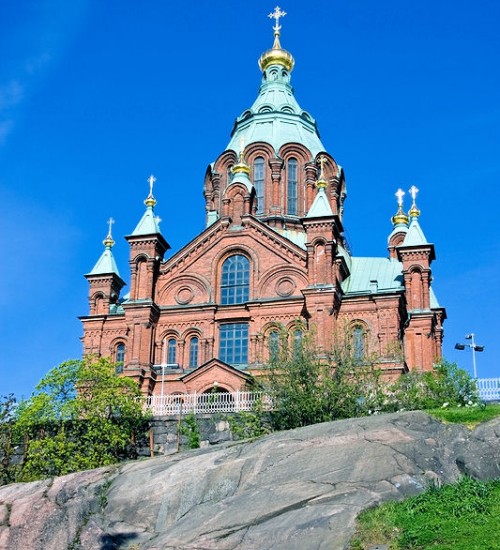
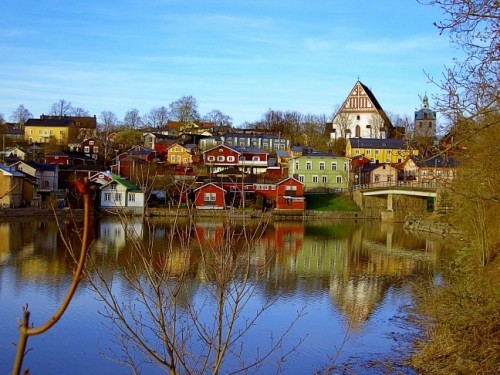 |
St.
Petersburg, Russia
One of the
world's most beautiful cities, St. Petersburg has all the
ingredients for an unforgettable travel experience: high
art, lavish architecture, wild nightlife, an extraordinary
history and rich cultural traditions that have inspired and
nurtured some of the modern world's greatest literature,
music, and visual art.
Although just 300 years old, St. Petersburg has a rich and
exciting history, full of dramatic events and major
historical figures. Founded in 1703 by Emperor Peter the
Great as his "window on the West", St. Petersburg enjoys a
vibrant, cosmopolitan atmosphere and some of the most
beautiful architecture in Europe. Despite its short life so
far, Petersburg has a rich and exciting history. From the
early days of Peter the Great's "Venice of the North" to the
modern events of the 1991 coup d'etat, the city has always
bustled with life and intrigue, revolution and mystery.
St. Petersburg has the clean lines and elegant architecture
of a planned city but built on top of the canals and
meandering rivers of a network of over 60 islands, earning
it a reputation among visitors as the Venice of the North.
And St. Petersburg does feel distinctly more European than
most of the other major Russian cities, however the city's
history, interwoven throughout the skyline with the colorful
tsar palaces and the ornate churches keep the city's Russian
identity alive.
A city of palaces and museums, broad avenues and winding
canals, St. Petersburg's short history has endowed the city
with a wealth of architectural and artistic treasures.
Alongside world-famous attractions such as the Hermitage,
St. Isaac's Cathedral and the Mariinsky Theatre, the city
has scores of lesser known but equally fascinating sights
that reveal both the pomp and extravagance of St.
Petersburg's political and Imperial past, and also the
mysterious, tragic genius that has touched so many of the
city's great artists and writers. Still considered Russia's
cultural capital, St. Petersburg reflects the country's
extraordinary fate like no other city, and its uniquely rich
atmosphere exerts a powerful grip on even the most jaded
traveler.
The Hermitage
St. Petersburg's most popular visitor attraction, and one of
the world's largest and most prestigious museums, the
Hermitage is a must-see for all first-time travelers to the
city. With over 3 million items in its collection, it also
definitely rewards repeat visits, and new-comers can only
hope to get a brief taste of the riches on offer here, from
Impressionist masterpieces to fascinating Oriental
treasures. One estimate has it that you would need eleven
years to view each exhibit on display for just one minute,
so many visitors prefer to organize a guided tour to ensure
they have time to catch all the collection's highlights. Art
aficionados, however, may find it more rewarding to seek out
for themselves the works that they are particularly
interested in.
The bulk of the Hermitage collection is housed in the Winter
Palace, formerly the official residence of the Romanov
Tsars, and its several annexes. However, there are a number
of other sites that constitute part of the Hermitage,
including the recently opened Storage Facility in the north
of St. Petersburg, which offers guided tours through some of
the museum's vast stocks.
The Old
Hermitage, is unquestionably the biggest draw for visitors
to St. Petersburg. Founded by Catherine the Great, who
bought up artwork en masse from European aristocrats,
embellished by each of her successors, and then massively
enriched by Bolshevik confiscations and Red Army seizures in
conquered Germany, the Hermitage collection is incredibly
varied, ranging from ancient Siberian artifacts to
post-impressionist masterpieces by Matisse and Picasso.
Winter Palace
Equally
impressive are the lavishly decorated State Rooms of the
Winter Palace, testament to the incredible wealth and
extravagant tastes of the Romanov Tsars.
When Peter the Great re-claimed the lands along the Neva
River in 1703, he decided to build a fort to protect the
area from possible attack by the Swedish army and navy. The
fortress was founded on a small island in the Neva delta on
May 27, 1703 (May 16 according to the old calendar) and that
day became the birthday of the city of St Petersburg. The
Swedes were defeated before the fortress was even completed.
For that reason, from 1721 onwards the fortress housed part
of the city's garrison and rather notoriously served as a
high security political jail. Among the first inmates was
Peter's own rebellious son Alexei. Later, the list of famous
residents included Dostoyevsky, Gorkiy, Trotsky and Lenin's
older brother, Alexander. Parts of the former jail are now
open to the public...
In the middle of the fortress stands the impressive Peter
and Paul Cathedral, the burial place of all the Russian
Emperors and Empresses from Peter the Great to Alexander
III. The Cathedral was the first church in the city to be
built of stone (between 1712-33) and its design is curiously
unusual for a Russian Orthodox church.
This elegant, early Baroque cathedral is still the second
tallest building in the city, outdone only by the modern
television tower. Almost every Russian ruler since the
cathedral's construction is interred here, and it is indeed
a regal place, with a majestic iconostasis and the
collection of huge, lavishly decorated tombs, many of which
are carved from valuable monolithic stones. The bell tower
is the cathedral's pride, its gilded needle stretching up
404 feet, topped with an angel holding a cross.
On top of the cathedrals' gilded spire stands a magnificent
golden angel holding a cross. This weathervane is one of the
most prominent symbols of St Petersburg, and at 404 feet
tall, the cathedral is the highest building in the city.
Other buildings in the fortress include the City History
Museum and the Mint, one of only two places in Russia where
coins and medals are minted.
Across the river from the Peter and Paul fortress you can
visit the historical Summer Garden. Behind the beautiful
wrought iron fence there is an old park that has witnessed
some of the most spectacular moments in St. Petersburg's
early history.
Impressed by the royal parks that he had seen in Europe,
Peter the Great was very keen to create something similar in
his newly built "Venice of the North". In Peter's new park
everything was created according to the latest fashions; the
trees and bushes were trimmed in the most elaborate way and
all the alleys were decorated with marble statues and
fountains. Peter the Great used to organize regular
receptions and balls in the gardens, his " assamblei ",
which involved dancing and drinking and impressive firework
displays.
Tsar Peter commissioned the city's first and foremost
architect, the Italian Domenico Trezzini, to build a small
palace in the park. The palace had no heating and was
intended only for summer time use, hence its name "Summer
Palace", as opposed to the "Winter Palace" that Peter had
built just down the same embankment of the Neva. The Summer
Palace, a small two-storey yellow building, was built
between 1710 and 1714, with 7 rooms on each floor. After the
Second World War the palace was carefully restored, the
older interiors were recreated and a collection of early
18th century artifacts, many originally owned by Peter the
Great, was put on display.
It is always a great pleasure to take a stroll down the
alleys of the Summer Garden, passing by the palace, the
marvelous marble statues and the pond. A pair of white swans
returns every year to the Karpiev pond in the Summer Garden,
even though the park is located in the middle of a bustling
city...
Of all St. Petersburg's attractions, the country estate of
Peterhof is perhaps the place that inspires the greatest
pride among the city's population. Extravagant and bombastic
in parts, elegant and relaxed in others, Peterhof's palace
and grounds are a more than ample testimony to the crazy
opulence of Tsarist Russia. The steps leading down from the
palace to the lower gardens run next to the Grand Cascaden,
a large area comprised of nearly 150 fountains, glittering
golden statues and checkered ceramic.
After visiting Versailles it is clear that Peter the Great's
Peterhof does qualify for the title of 'The Russian
Versailles'. The same ornate water features litter the
perfect lawns and classical pillars and statues, some
covered in gold leaf, lead up to the same grand chateau
style palace.
The main fountain, called The Grand cascade is modeled on
Louis XIV's Marly Chateau, underneath which there is a
museum detailing the construction of Peterhof's fountains
which work by harnessing the natural pressure built up from
underground springs. Though undoubtedly grand the fountains
are also playful - many intending to soak un-wilily
passersby.
The main palace is the Grand Palace which is built long and
narrow to make the most of its prime views over the gardens.
This palaces 30 rooms contain some unusual pieces of art and
a generous collection of eastern and Asian artifacts.
While the brightly colored almost shimmering exterior may be
photo familiar, the interior may surprise, it's covered in
mosaics carefully mimicking famous Russian art works. The
blood in the churches name is that of Alexander II,
following the tradition in the Russian Orthodox Church of
building Spilled Blood Churches on places where Tzars have
been murdered.
The section
of cobble stoned road on which Alexander II was mortally
wounded by a grenade explosion is now included within the
walls of the church, a striking contrast to the opulent
designs and mosaics which surround it. Commissioned by
Alexander III in 1883 as a memorial to his father the style
was chosen to give the relatively new St. Petersburg a more
traditional feel, based as it is on St. Basils in Moscow,
many critics say it's artificial and much more modern than
traditional. During the revolution it was closed off then
used to store potatoes during WWII, after 27 years of
restoration it is now open as a mosaic museum but has never
been re-consecrated as a church.
The magnificent Church of the Savior on Spilled Blood is one
of St. Petersburg's most memorable landmarks. The church,
built at the end of the 19th century, is constructed in a
classical Russian style decorated with colorful domes and
glazed tiles.
Officially consecrated as the Church of the Resurrection of
Christ, the Russian Orthodox gem more commonly known as the
Church of the Savior on Spilled Blood was built to honor
tsar Alexander II of Russia, who was assassinated at the
site where the church now sits, hence the reference to
"spilled blood". The section of the street on which the
assassination took place is enclosed within the walls of the
church and the site of the murder is marked by a chapel in
the building.
At the request of Alexander III, son of Alexander II,
construction on the church began in 1883. Funding for this
amazing structure was almost totally provided by the
Imperial family with other donations made by private
individuals. The project was completed in 1907.
The principle architect chosen for the project was Alfred
Alexandrovich Parland, who was, incidentally, a
non-Russian-born individual. The architecture of the church
varies greatly from other buildings and religious structures
in St. Petersburg, which were largely constructed in the
Baroque and neo-Classical styles.
Looking at both the interior and exterior, it's easy to see
why the church cost about 4.6 million rubles, way over the
budgeted 3.6 million. The outside was designed to mirror the
magnificent St. Basil's in Moscow, the city's
easily-recognizable centerpiece, and the building - both
inside and outside - features about 7,000 square meters of
mosaics, most of them designed by the prominent artists of
the time, including Viktor Vasnetsov, Mikhail Nesterov and
Mikhail Vrubel. The majority of the mosaics depict biblical
scenes and saints though some are just patterns. The
colorful onion domes, of which the central one reaches a
height of 81 meter (266 ft), are covered with bright
enamels.
|
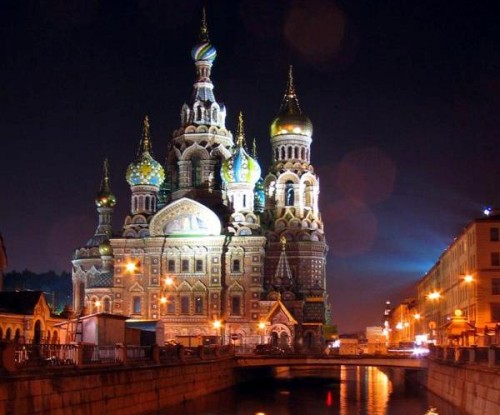
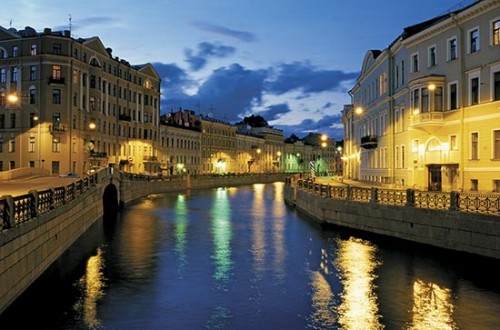
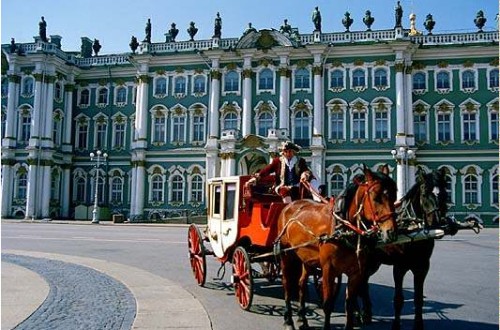
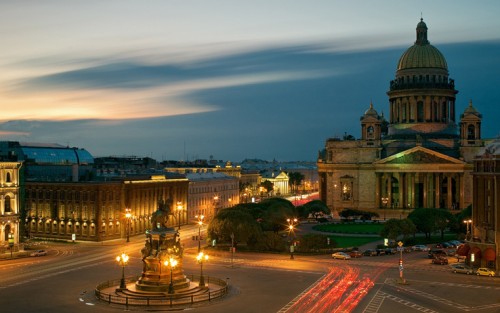
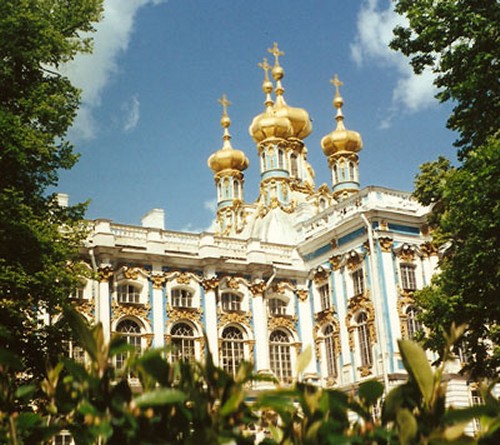
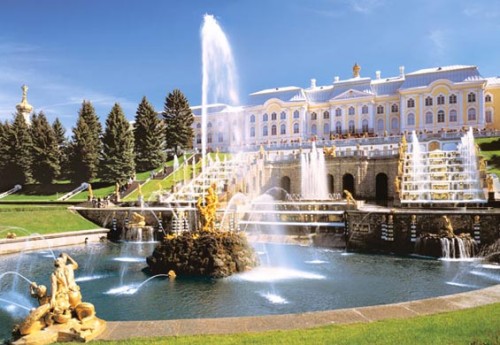
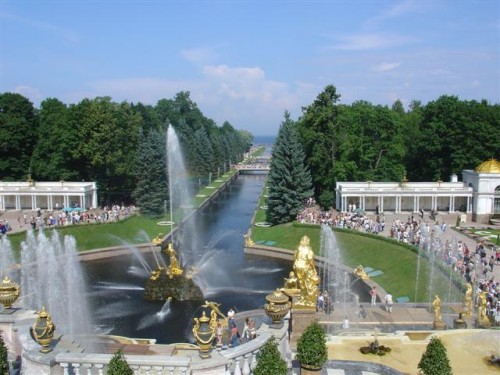
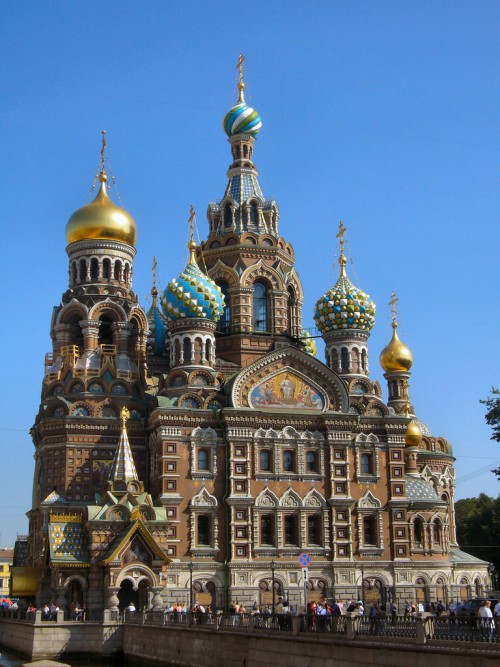
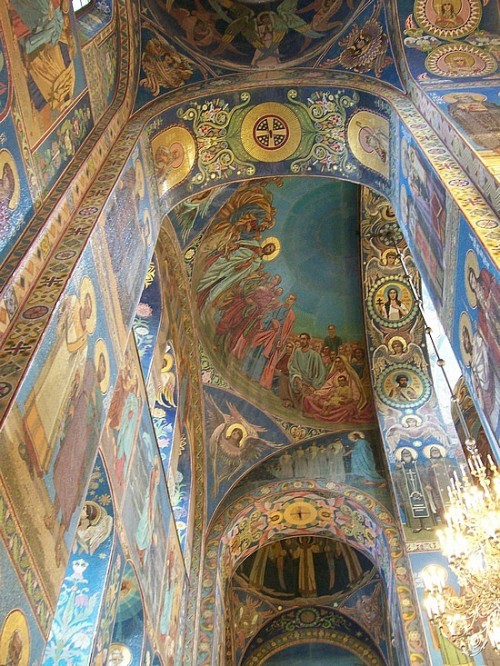 |
Tallinn,
Estonia
One of
Europe's most enchanting cities, Tallinn is a heady blend of
medieval and modern, with narrow, cobbled streets set
beneath the spires of 14th-century churches, and a wild mix
of restaurants cafés, boutiques and nightclubs hidden in the
carved stone walls.
Most visitors gravitate to the Old Town, one of Europe's
most fascinating and well preserved.
With nearly 2km of its original city wall still standing,
Tallinn boasts one of Europe's best preserved Medieval
fortifications. In fact, a large part of what gives Old Town
its fairytale charm is the system of walls and and towers
that surrounds it.
Savor the fabulous architecture and narrow passageways that
for centuries were the heart of this Hanseatic League
trading town.
Work on the town's defenses first began in 1265, but the
current outline of the wall dates to the 14th century. By
its heyday in the 16th century, the wall was 2.4km long,
14-16m high, up to 3m thick, and included 46 towers. Today
1.9 km of the wall and roughly half of the original towers
still loom over Old Town, evoking images of heroic knights
and damsels in distress.
The best places to see the wall from the outside are the
Patkuli view platform on Toompea and the Tornide väljak
(Tower Square), a park area near the train station.
It's also possible to get a look at the wall from the
inside. The portion of the wall that's open to the public
connects Nunna, Sauna and Kuldjala towers. Visitors can
climb up and imagine what it felt like to guard the town
against would-be invaders, but the wall is even more popular
for its picturesque view of the red-tiled roofs of Old Town.
In the heart of the Old Town are the medieval structures
that formed the base of Tallinn's commercial operations. Not
far from the sea, the square is dominated by the
600-year-old Town Hall. A climb to the top of its tower
offers visitors astounding city and harbor views. Directly
across from the Town Hall is the Town Hall Pharmacy, which
claims to be one of Europe's oldest. Here, visitors can
still get their medical complaints attended to on a site
that claims to have been catering to those in need since the
early 15th century.
A walk through Salakang Alley, one of the city's most
intriguing narrow passageways, brings visitors to another
15th-century gem, the Great Guild Hall. This is where
wealthy merchants bought and sold goods and set ground rules
that controlled much of the city's labor force. Today it is
home to the Estonian History Museum, featuring artifacts and
interactive displays that provide a real understanding of
the importance of commerce to Tallinn. Not far away is the
cobble-stoned St. Catherine's Passageway, which is lined
with crafts shops along the surviving wall of St.
Catherine's Church, erected in 1246.
Old Tallinn is actually a two-tiered town. The older sector,
called Toompea, is the site of the original Danish
settlement where the homes of noblemen were constructed.
Highlights include the 13th-century Toompea castle,
Riigijkogu, Estonia's parliament, the impressive Alexander
Nevsky Russian Orthodox cathedral and the 13th-century St.
Mary's church.
Perched on a limestone cliff and towering over the rest of
the city, Toompea Castle has always been the seat of power
in Estonia. Ever since the German Knights of the Sword first
built a stone fortress here in 1227-29, every foreign empire
that ruled Estonia used the castle as its base. Today,
appropriately, it's home to Estonia's Parliament.
The castle has been revamped countless times through the
centuries, but still retains the basic shape it was given in
the 13th and 14th centuries. From its front, visitors can
only see a pink, Baroque palace dating to the time of
Catherine the Great. A look at its opposite side, visible
from the base of the hill, gives a much more Medieval
perspective.
From the Governor's Garden at the castle's southern edge,
the 46-metre Pikk Hermann tower comes into view. The tower
is a vital national symbol: tradition dictates that
whichever nation flies its flag over Pikk Hermann also rules
Estonia. Each day at sunrise the Estonian flag is raised
above the tower to the tune of the national anthem.
The gleaming, Medieval church that stands at the centre of
Toompea hill is best known by locals as the 'Toomkirik'
(Dome Church), and it's the main Lutheran church in Estonia.
Established sometime before 1233 and repeatedly rebuilt
since, the church displays a mix of architectural styles.
Its vaulted main body dates to the 14th century, while its
baroque tower was an addition from the late 1770s.
Historically this was the church of Estonia's elite German
nobles, a fact that becomes clear once you step through the
doors. The interior is filled with elaborate funereal coats
of arms from the 17th to the 20th centuries as well as
burial stones from the 13th to the 18th centuries. Among the
notables buried here are Pontus de la Gardie, who commanded
Swedish forces during the Great Northern War, Adam Johann
von Krusenstern, the Baltic-German admiral who led Russia's
first expedition around the world, and Scottish-born Admiral
Samuel Greig of Fife, rumoured to be Catherine the Great's
lover.
Just inside the main entrance you'll find a large stone slab
which reads, "Otto Johann Thuve, landlord of Edise, Vääna
and Koonu Ehis grave, 1696 A.D." Thuve,
now sometimes referred to as 'Tallinn's Don Juan', was an
incurable drinker and womanizer. As he lay dying, however,
he asked to be buried here at the threshold of the church so
that god fearing people, as they kneel to pray upon
entering, might eventually save his soul from his sinful
ways.
Much of the town's appeal for overseas visitors is the
medieval section within the city's surviving walls. But
there are some newer attractions, including the 18th-century
Kadriorg Park palace and cottage erected by Russia's Peter
the Great, as well as several nearby museums.
A trip to Tallinn isn't a trip to Tallinn without a visit to
this magnificent northern baroque palace, built by Peter the
Great for his wife, Catherine I, in 1718.
Designed by Italian architect Niccolo Michetti, the
grandiose palace and surrounding manicured gardens are a
humbling example of Tsarist extravagance, but just as
important a reason to visit is that this is also home to the
foreign art collection of the Art Museum of Estonia.
The Kadriorg Art Museum displays hundreds of 16th- to
20th-century paintings by Western and Russian artists, as
well as prints, sculptures and other works.
Don't miss the two-story main
hall, with its elaborately painted ceiling and stucco work,
or the room used as an office by Estonia's head of state
before the nearby Presidential Palace was built.
Surrounding the Palace are several interesting palace side
buildings. For example the restored kitchen building is now
occupied by a cozy art museum
called the Mikkel Museum, and the humble summer estate is
the Peter I House Museum. The palace governor's house (the
castellan's house) is now home to the Kastellaanimaja
Gallery and the Eduard Vilde House Museum.Equally
fascinating is the KGB Museum atop the Viru Hotel.
Located quite
close to the Viru Gate-a prime entry point in the medieval
walls-the hotel was constructed by the Soviet Union in 1972
to help draw visitors and their hard currencies from the
West. While limited visitation was encouraged, the KGB (the
Soviet spy agency) ensured that every guestroom was bugged
and almost everything that happened within the hotel was
scrutinized. Today, hour-long tours include a visit to the
KGB office.
The World Heritage-listed Old Town has plenty of
distractions for even the most ambitious itinerary. Although
large art museums are nonexistent, you'll find some historic
gems that illuminate both Tallinn's medieval past and its
long grey days under the Soviet yoke. Meanwhile, its growing
gallery scene showcases Estonia's most creative 21st-century
artists
Color isn't limited to the art world. The flare of the
streets is decidedly fashion-forward, with Tallinn's
boutiques bearing the imprint of rising Estonian designers.
This contrasts with the centuries-old artisan traditions of
glassblowing, weaving and pottery, all of which make Tallinn
such a shoppers' paradise.
Tallinn's café culture is hard to match. Art-Deco
patisseries, cozy, candlelit anterooms and breezy, sunlit
patios are the settings for strong coffee and
people-watching - a fine prelude to the city's alluring
restaurants and bars. Decadent old-world dining rooms,
charming wine cellars and super-stylish
bistros provide the backdrop to exquisite dishes from every
savory corner of the globe.
Outside the medieval quarters, there's lots to see. Delve
into the past at Peter the Great's Kadriorg Palace, a
baroque masterpiece surrounded by idyllic woodlands. A trip
to Tallinn isn't a trip to Tallinn without a visit to this
magnificent northern baroque palace, built by Peter the
Great for his wife, Catherine I, in 1718.
Designed by Italian architect Niccolo Michetti, the
grandiose palace and surrounding manicured gardens are a
humbling example of Tsarist extravagance, but just as
important a reason to visit is that this is also home to the
foreign art collection of the Art Museum of Estonia.
The Kadriorg Art Museum displays hundreds of 16th- to
20th-century paintings by Western and Russian artists, as
well as prints, sculptures and other works.
While here, don't miss the decadent, two-storey main hall,
with its elaborately painted ceiling and stucco work, or the
room used as an office by Estonia's head of state before the
nearby Presidential Palace was built.
Surrounding the Palace are several interesting palace side
buildings. For example the restored kitchen building is now
occupied by a cosy art museum called the Mikkel Museum, and
the humble summer estate is the Peter I House Museum. The
palace governor's house (the castellan's house) is now home
to the Kastellaanimaja Gallery and the Eduard Vilde House
Museum.
Or make like a local and head to Pirita or Väna-Jõesuu for a
slice of beach action. There are also coastal islands and a
bizarre old cliff-top military base. But don't stop there;
you'll find plenty more to discover in this vibrant city.
|
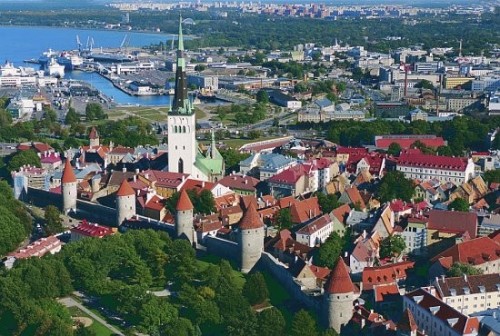
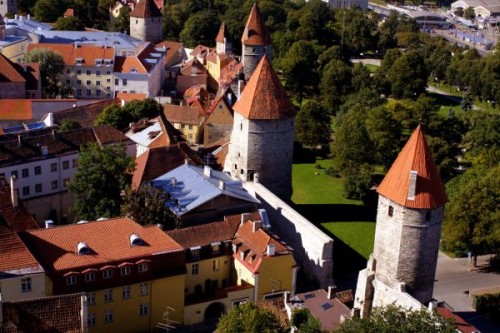
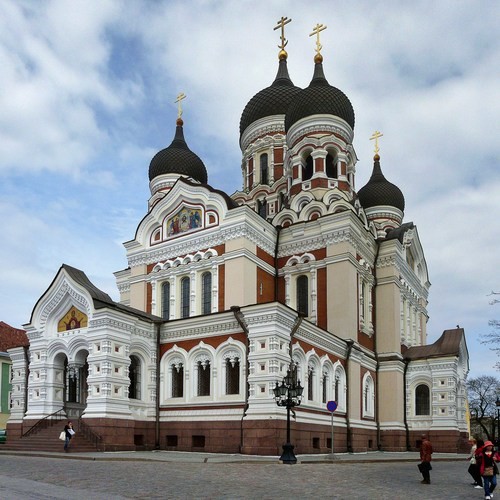

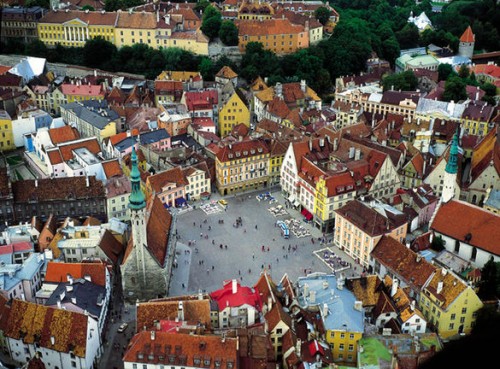
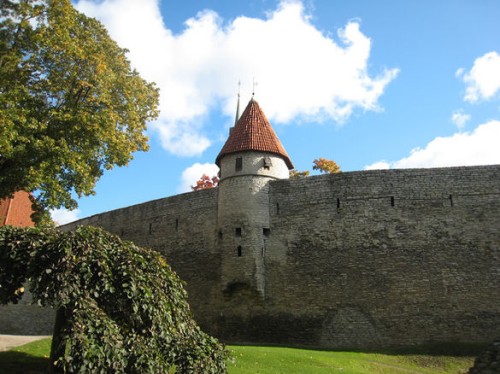
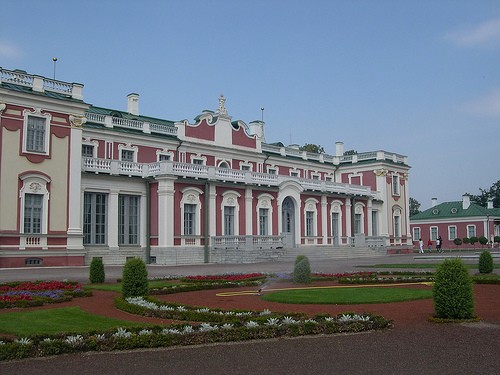
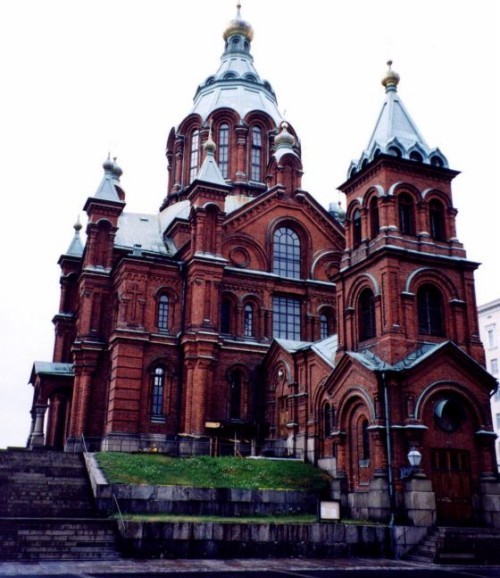
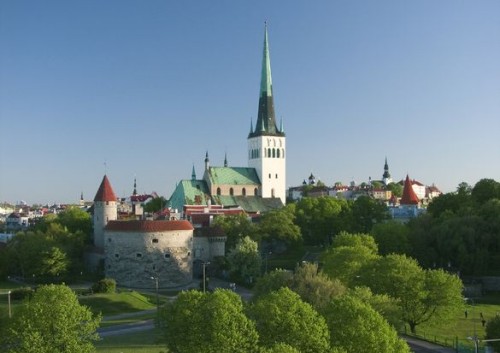 |
About our Trip
to Russia and the Baltic Sea
Rick's
Note:
Most of us
Texans don't know much about the how vast and mighty Russia
came into being. The story of Russia is quite
fascinating indeed.
Considering
how imposing Russia is today, it is hard to believe that
once upon a time, Russia was a giant underdog. It was
an undeveloped, backwards country with poor leadership and a
bitter, resentful people fed up by centuries of oppression.
Then came
Peter the Great, who practically changed all that
singlehandedly.
So was Peter
the Great wonderful? No. In fact, he was
one of the cruelest men to ever hold power. So then
why was he great? Wouldn't you like to know?
Just as
studying the Trojan War makes a trip to Greece more
interesting and studying the Roman Empire does likewise for
a trip to Italy, learning the ancient history of this region
of the world has helped me appreciate the ghosts that will
loom over our ship as we sail across the Baltic Sea.
If you are
interested in learning more about the history of Russia and
the Baltic Region in general, you will surely enjoy my
five part story. I can tell you one thing about it - I loved
researching this subject as much as any trip we have ever
taken because the story of Russia is simply remarkable.
I cannot
believe the propensity for suffering in the Russian people.
You have read the story to understand.
The Early History of Russia
|
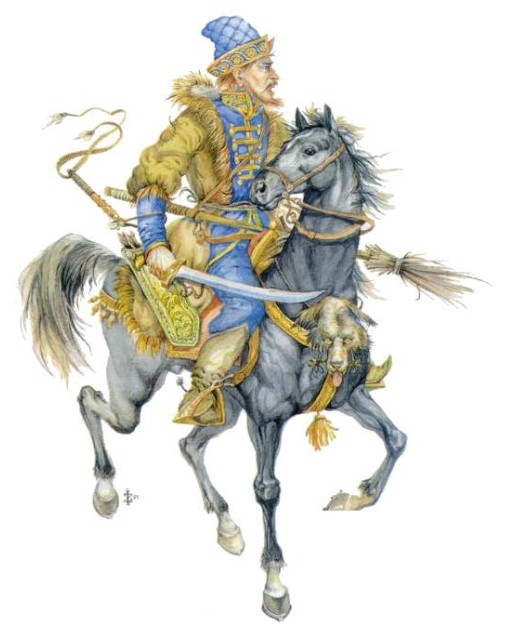 |
|
|